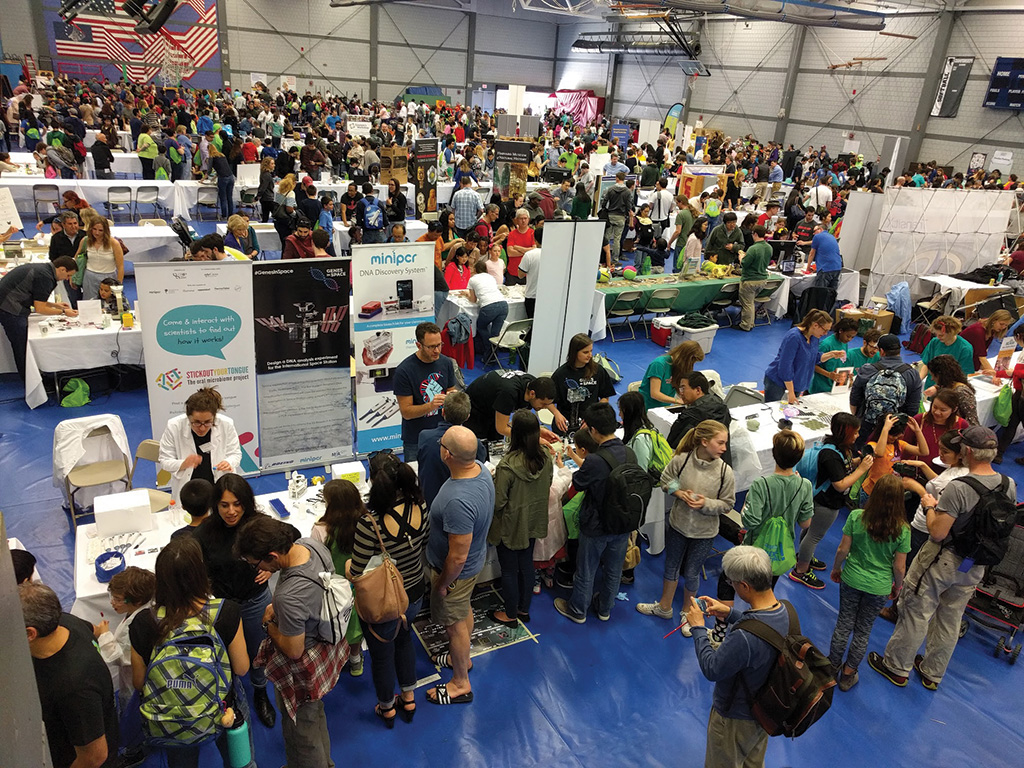The second edition of the citizen science project ‘Stick Out Your Tongue’ started at the end of 2016. This project, within the scope of open science, is the first study into the mouth’s microbiome that aims to study the genetic footprint of different microbial communities and explore a possible relationship with environmental characteristics or lifestyle. Funded mainly by the “la Caixa” Bank Foundation and the CRG, the second run of the project aimed, in addition, to incorporate new scientific variables and focal points, tackle new challenges, reach new target audiences and involve and collect samples from different populations and patients suffering from different diseases. This was done by organising a new tour across Spain and by offering new activities based on innovative and participative formats that allowed us to engage with these new target groups, communicate our research and objectives and provide feedback about the project to the participating citizens and the general public. Thanks to this improved strategy, we reached 3,700 people, 34 schools, 13 patient associations and 21 cultural centres.
Throughout the year, the CRG continued to offer public engagement and science education activities, although some initiatives merit particular mention. In the framework of a collaboration with the miniPCR company and the ‘Stick Out Your Tongue’ project, we were invited to participate in the Cambridge Science Festival in Boston in April. This was a truly enriching and successful experience and brought us positive inputs. We also launched a new and successful workshop addressed to parents entitled ‘Your children can become scientists’, aimed at giving tips and advice to parents with children that need to decide their career path. We also engaged in a new pilot education project with mSchools, entitled ‘The Complexity of Life’, which consists of a set of materials and resources to introduce students into the field of life sciences through mobile technologies. mSchools is a multi-faceted mEducation programme of Mobile World Capital Barcelona in partnership with the Government of Catalonia, the Barcelona City Council and GSMA, empowering students and teachers to integrate mobile technologies into the classroom, opening up new ways of teaching and learning that improve achievement and employability. The CRG was also one of the institutes hosting students from the Barcelona International Youth Challenge (BIYSC), organised by the Catalunya La Pedrera Foundation. The BYSC is a two-week international excellence programme that seeks to stimulate scientific talent among young people from all over the world and to encourage their enthusiasm for pursuing scientific research and a career in science.
From the training standpoint, the department hosted 5 interns in the ‘Learning by Doing’ internal internship programme, who carried out small projects related to public engagement, science education and media relations. During the year, we also contributed to two new important institutional initiatives: ORION and SOMMa. ORION is a CRG-coordinated H2020 project launched in 2017. The project’s main topic is open science and it explores ways in which research and funding organisations in life sciences and biomedicine can open up the way they fund, organise and engage in research. The Communications & PR team contributes to several tasks in ORION, particularly the public dialogue and citizen science experiments. SOMMa is the alliance of Severo Ochoa Centres and María de Maeztu Units to promote Spanish Excellence in research and to enhance its social impact at home and abroad. The involvement of Communications & PR in SOMMa targets the promotion, visibility and outreach of this alliance.
CRG scientists were also deeply engaged in media activities throughout the year in connection with the new findings published in high-profile journals and institutional and outreach activities that yield articles in written and online media, as well as participation by scientists in radio or TV programmes. The economic value of these media appearances surpassed 13MEUR.
2017 was also a busy year in terms of the organisation of seminars, sessions and scientific meetings, including the international scientific meetings “Barcelona NGS’17: Structural Variation & Population Genomics”, co-organised by the International Society for Computational Biology (ISCB); “Enhancing the Usage of Human Genomics data for the benefit of all. Genotype Tissue Expression (GTEx) project meeting”; “Young Scientist Networking Meeting 2017”, organised together with EMBO and India BioScience; the “V Core Management Workshop: Training the Trainers”; the “16th CRG Symposium: Seventh International Workshop on Genomic Epidemiology”; the “15th RECOMB Comparative Genomics Satellite Workshop” and the “CRG Annual Proteomics Symposium 2017: Unveiling the complexity of the cell proteome”


